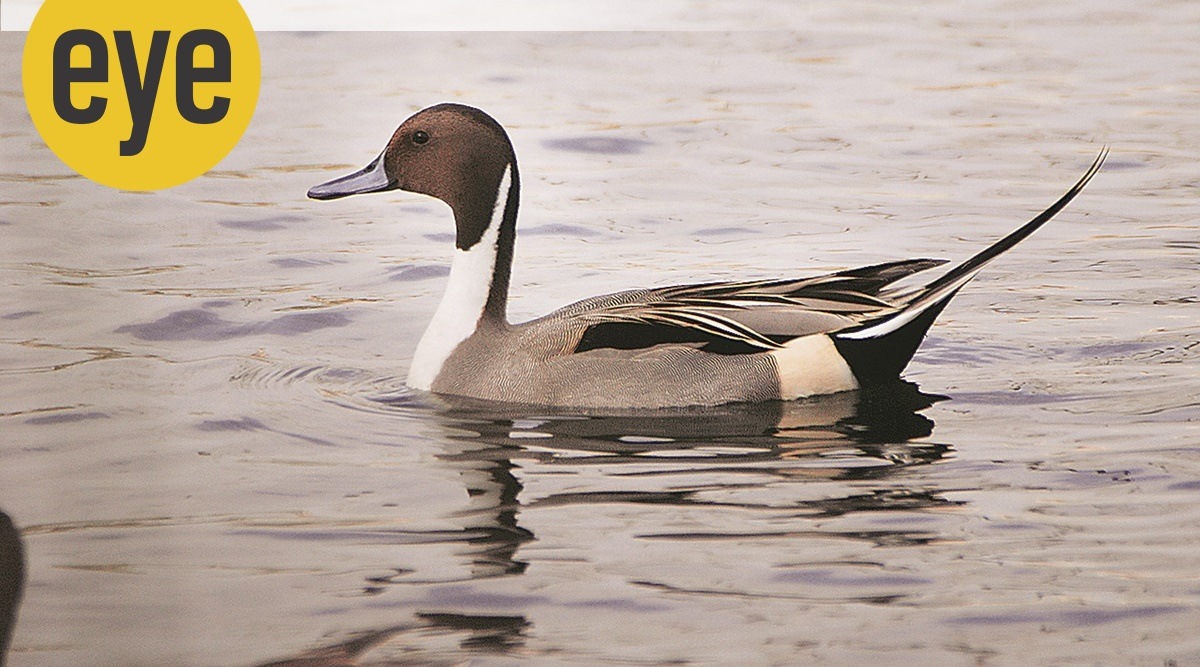 Pintail tufted pochard
Pintail tufted pochard For unavoidable and unpleasant reasons, I was unable to do any birding this winter. I completely missed out on all the migratory fanfare — the arrival of the great flocks of waterfowl, the waders zipping in, and the overnight magical appearances of tiny tot long-distance travellers in parks and gardens. At last, just recently, I was able to make off for the Yamuna Biodiversity Park, a favourite stamping ground for me. It’s always a bit of a schizophrenic experience: one minute you’re dodging past demented autorickshaws pirouetting across the narrow road, or squeezing past a gigantic trailer truck attempting an impossible U-turn blocking both lanes, and then, after the cacophony, as you turn into the park, you are stunned by the sudden, hushed silence.
The foliage these days is dusky green and tan as a lion’s hide, and the breeze is fresh and cool. The large water body which you head for is at peace, freckled with the ducks which have still not left — and you are thankful to them for hanging on. What’s more: they seem to be in spiffing new outfits, some of them, thrusting their chests out and showing off no doubt. The majority are shovellers with blazing white chests, their heads glistening dark green and royal purple as they slowly rotate in the water. Their beady, gimlet eyes are a hard yellow-gold — but, alas, their webbed feet a bright plastic orange! Their beaks look like the upper half of a moccasin, and, I guess, if you had a mouth that looked like footwear, you wouldn’t sport the sunniest smile in the pond! Their flanks are a rich chestnut and their wings are flame blue near the shoulder, giving way to emerald green midway (the speculum), divided by a bar.
Always dandies, the pintails were looking extremely satisfied with themselves, their bearing erect as they followed each other, smart in their finely woven silver-grey, caramel (on the stern), white and chocolate-brown outfits. The “pin” feathers in their tails stuck out prominently, and, unlike the shovellers, these dudes looked happy with life. Towards the far end of the lake were wary common pochards. I remember seeing them in Chandigarh’s Sukhna Lake where they floated up to the water’s edge so you didn’t even need your binoculars to check them out: they have a finely woven silver-grey plumage, black breast, auburn heads and the most disconcerting-looking red eyes. Pochards are diving ducks, going in deep to find food, unlike the “dabblers” (shoveller and pintail), who pick up minute animal matter from the water’s surface. I spot a couple of tufted pochards, too: severe-looking black-and-white ducks, with a shendi (small crest) and beady yellow eyes.
Not all ducks go off to Central Asia, Eastern Europe or even Mongolia to breed. The busty-looking spot-billed duck, with its heavy kajal eyes and orange bindi at the base of its yellow-tipped black bill, floated around placidly, pairs following pairs — even though the breeding season (monsoon) is months away. Its breast is beige, polka-dotted with pepper, its back dark brown, scalloped in white, it flashes an emerald green speculum when it flies. Both sexes are so dressed, unlike other ducks, where the ladies are clad in dappled browns and blacks.
The ash-white dead tree, on the island in the middle of the lake, was adorned with large and little cormorants: the yellow-faced will aggressively ward off any rival threatening to take their perch. It’s calming to watch a pair of big grey herons fly in slow-mo around the lake, almost like flying yoga! That sleek stealth javelin of a bird, the darter (aka snakebird) would occasionally slip off its perch and wing low over the water, always a treat to watch. Common coot, in shiny black, floated around proudly, showing off their tennis-shoe white frontal shields. A pair of red-wattled lapwings was throwing a hissy-fit at the far end too, circling about screaming hysterically: they must have just about started to nest.
But the dark-brown marsh harrier that swung by didn’t seem interested, occasionally coming in low to take a look — just in case there was a sick or injured bird hiding in the reeds.
Invisible in the reeds fringing the lake were (resident) yellow-bellied warblers, tinkling away merrily like xylophones, teasing you with their proximity and still unspotted — the ultimate hide-and-seekers! But quite visible and busy with breakfast was one of those infernal little warblers — a chiffchaff, perhaps (it takes several lifetimes to sort out warblers, better known as LBJs or little brown jobs!).
Our visitors will now fly the gauntlet to get back home and bring the next generation into this world. To them, we raise our glasses and say, salute!
 Continue with Facebook
Continue with Facebook Continue with Google
Continue with Google